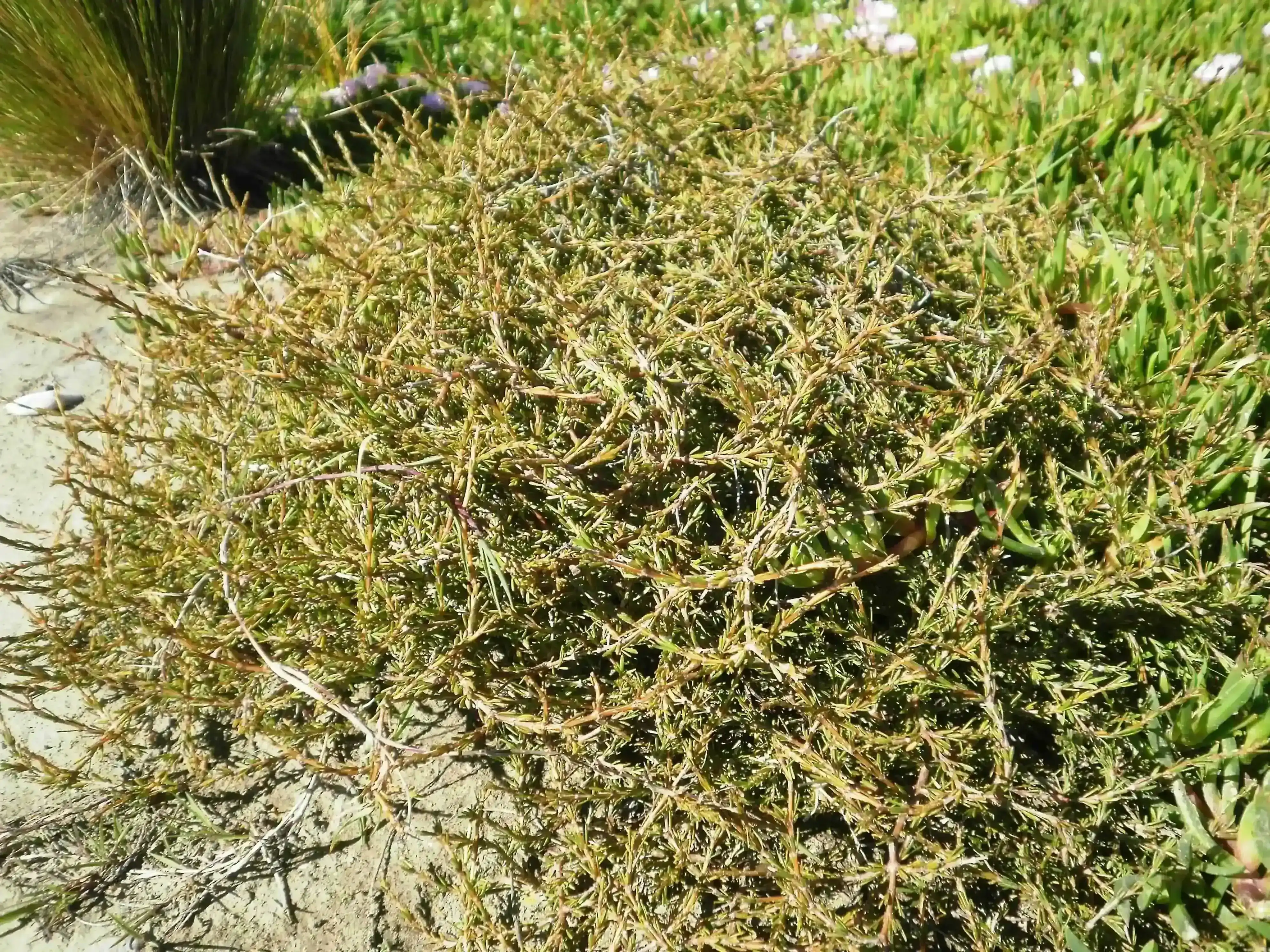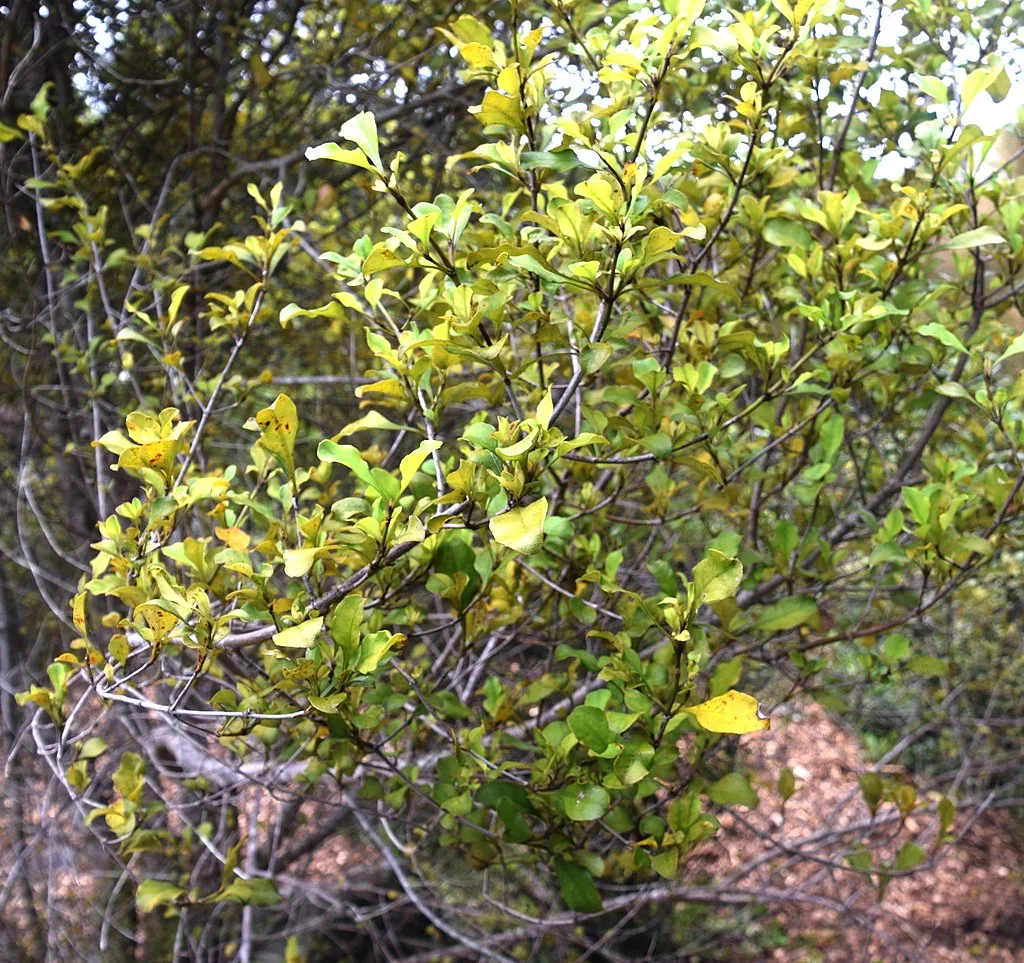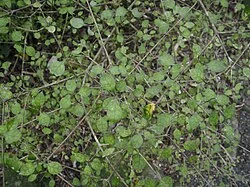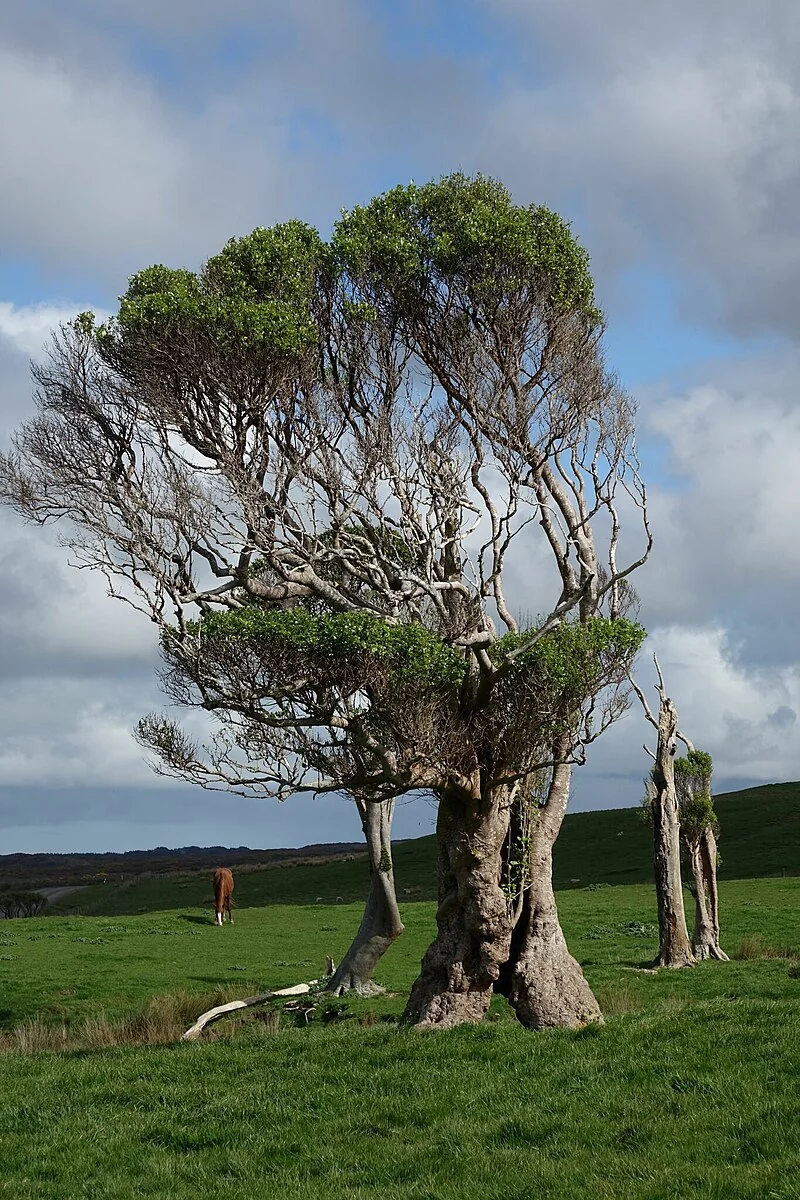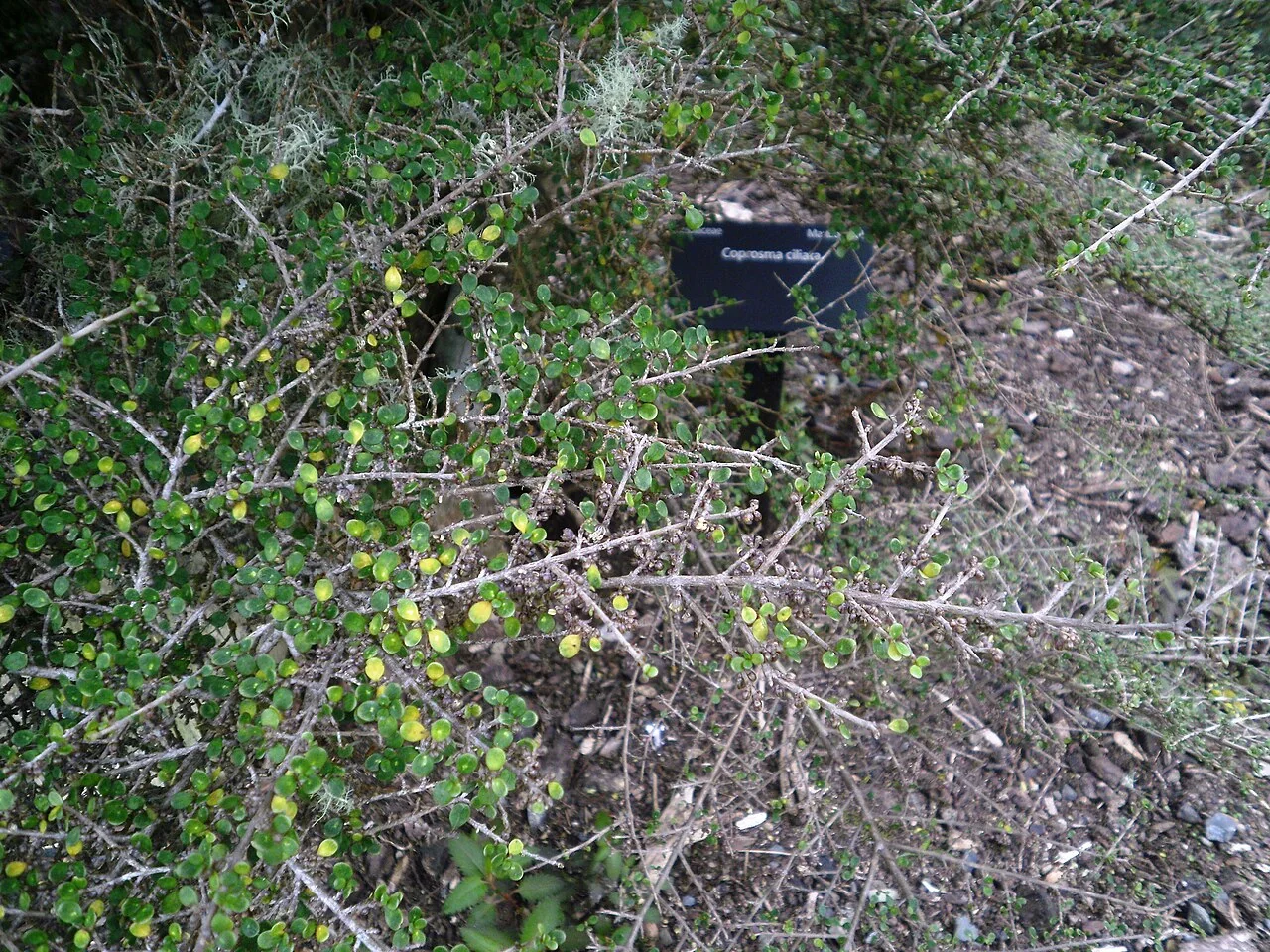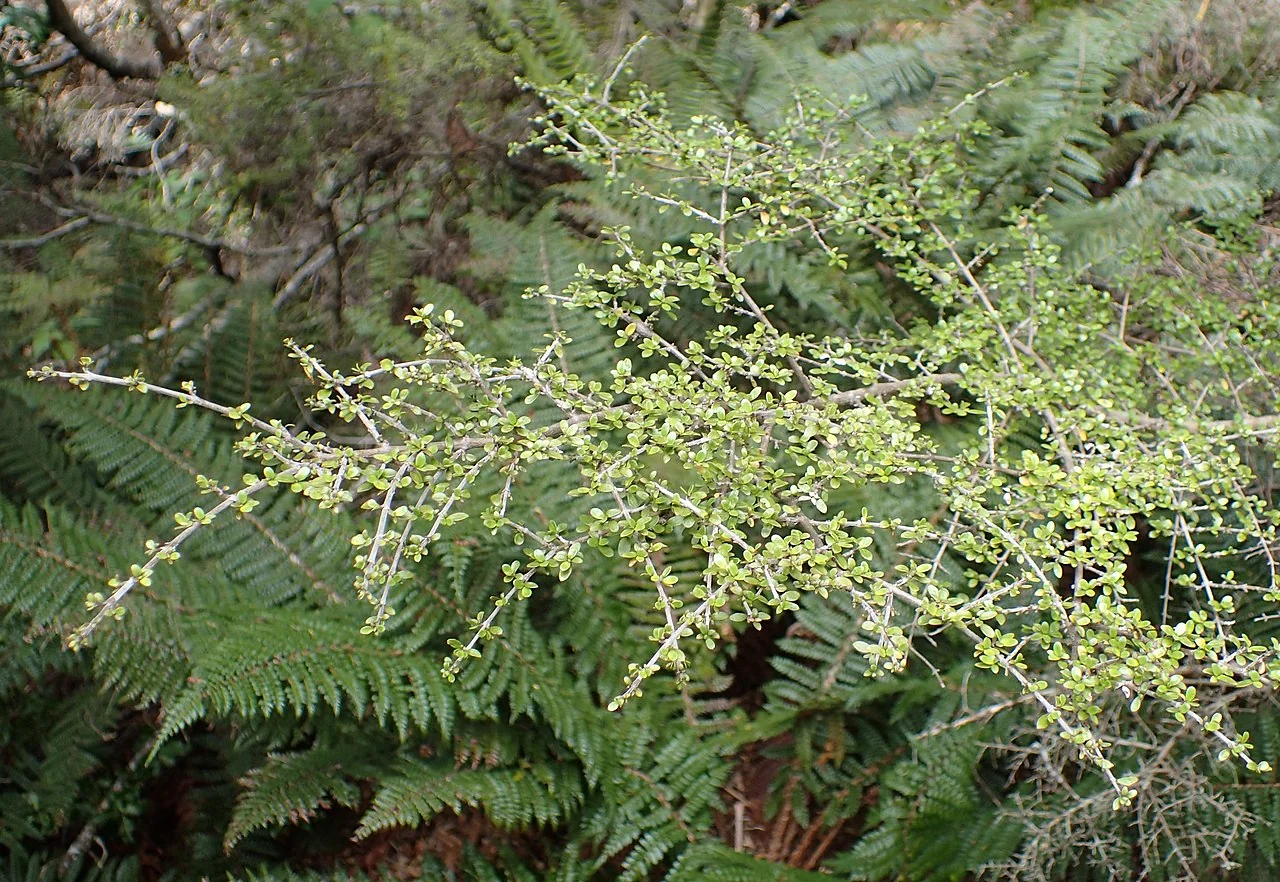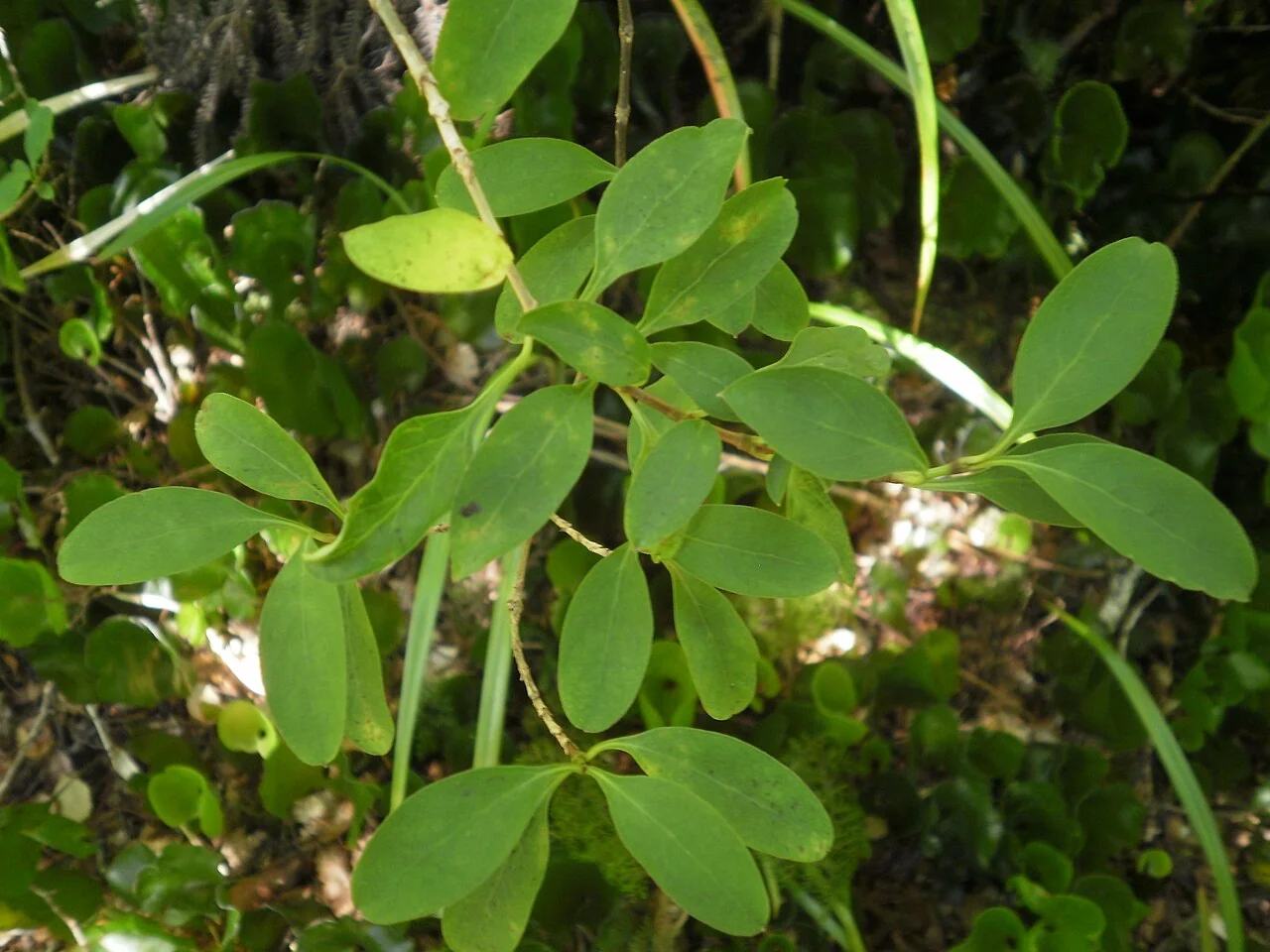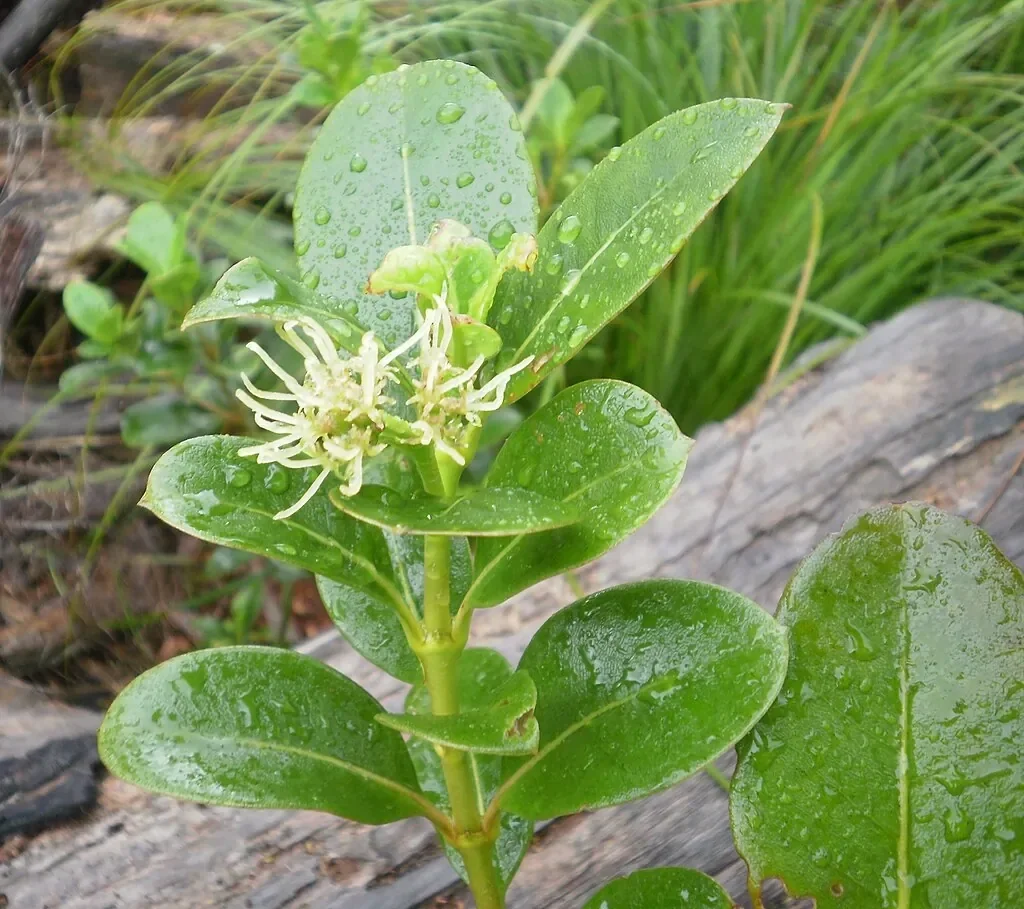
Shining Karamū
Coprosma lucida
Introduction
Introduction Overview
Shining Karamū, known scientifically as Coprosma lucida , is a distinctive native shrub renowned for its glossy, leathery leaves that give it both its common name and striking visual appeal throughout the year. This medium -sized shrub typically grows 2-4 meters tall with an upright, branching habit, featuring oval to oblong leaves 2-6cm long with a characteristic bright, shiny surface that reflects light beautifully and creates an attractive contrast in native plantings. Endemic to New Zealand and found naturally in coastal to montane forests throughout both islands, Shining Karamū produces small white flowers in clusters during spring, followed by bright orange to red drupes that are eagerly consumed by native birds including tūī, bellbirds, and kererū. The plant 's robust constitution makes it highly adaptable to cultivation, thriving in both sun and partial shade with excellent drought tolerance once established, while its dense foliage provides valuable shelter for small birds and its berries support native wildlife, making it an outstanding choice for wildlife gardens, shelter plantings, and restoration projects where its glossy foliage adds year-round beauty and ecological value. native shrubs .

Plant Description
Botanical Features
Coprosma lucida , commonly known as Shining Karamū, is a distinctive evergreen shrub or small tree endemic to New Zealand, typically growing up to 5 to 6 meters tall. It is renowned for its glossy, leathery, elliptical leaves, typically 12-17 cm long, which are dark green and shiny on the upper surface and paler underneath. A prominent midrib protrudes from both surfaces, and the underside often features domatia (small pits). It produces small white or green flowers in spring, followed by small clusters of oblong, yellow-orange to orange fruits that ripen in autumn. The roots and inner bark are yellow. It is commonly found in coastal areas, lowland forests, or shrublands throughout New Zealand, thriving in moist, well-drained, mildly acidic to neutral soils in semi-shade or full sun.
Quick Facts
Quick Facts Overview
| Scientific Name | Coprosma Lucida |
|---|---|
| Height | Up to 6 m (20 ft) |
| Spread | 2-4 m |
| Water Needs | Moderate (tolerates some drought once established) |
| Light | Full sun to part shade |
| Frost Tolerance | Moderate (tolerates light frost) |
| Salt Tolerance | Moderate (tolerates some coastal exposure) |
| Growth Rate | Fast |
| Lifespan | Several decades |
Climate Best Suited to
Thrives in cool, moist conditions typical of New Zealand forests . Prefers temperatures between 8-20°C. Tolerates light frosts and high humidity.
Regional Suitability
Shining karamū is found throughout New Zealand, especially in lowland and coastal forests.
| City | Suitability |
|---|---|
| Whangārei | Ideal |
| Auckland | Ideal |
| Hamilton | Ideal |
| Tauranga | Ideal |
| Rotorua | Ideal |
| Gisborne | Ideal |
| New Plymouth | Ideal |
| Napier | Ideal |
| Whanganui | Ideal |
| Palmerston North | Ideal |
| Wellington | Ideal |
| Nelson | Ideal |
| Christchurch | Ideal |
| Dunedin | Ideal |
| Invercargill | Ideal |
Natural Habitat
Natural Habitat Overview
Coprosma is naturally found in specific habitats throughout New Zealand. Understanding its natural environment helps in providing appropriate growing conditions in cultivation.
Plant Conservation
Conservation Status and Efforts
Coprosma lucida (Shining Karamū) is currently classified as "Not Threatened" under the New Zealand Threat Classification System, reflecting its relatively stable populations across both North and South Islands. This endemic shrub maintains healthy populations in coastal to montane forests, demonstrating remarkable adaptability to New Zealand's diverse forest ecosystems from sea level to approximately 1,200 meters elevation.
However, like many native forest species, Shining Karamū faces ongoing pressures from habitat fragmentation, invasive weeds, and browsing by introduced mammals such as possums and deer. Conservation efforts focus on protecting remnant forest habitats, controlling invasive plant species that compete for resources, and maintaining ecological corridors that allow for genetic diversity between populations. The species plays a crucial role in forest succession and bird habitat provision, making its conservation essential for broader ecosystem health.
Restoration projects throughout New Zealand actively use Shining Karamū in revegetation efforts due to its fast growth rate, wildlife value, and ability to establish quickly in disturbed sites. Its glossy foliage and colourful berries make it valuable for both ecological restoration and urban native plantings, helping to reconnect fragmented forest habitats while providing food and shelter for native birds including tūī, bellbirds, and kererū.
Soil
Moist, well-draining, fertile soils are best. Tolerates a range of soil types.
Light
Full sun to part shade. Grows well in dappled forest light.
Water
Moderate water needs. Water regularly during dry spells.
Planting Guide
When to Plant
The best time to plant Coprosma is during spring or autumn when soil temperatures are moderate and rainfall is reliable.
How to Plant
Dig a hole twice the width of the root ball and slightly deeper. Place Coprosma in the hole, backfill with soil, and water thoroughly. Mulch around the base to retain moisture.
Ecological Role
Wildlife Interactions
Coprosma lucida plays a vital ecological role, primarily providing abundant fruit for native birds like tūī, bellbirds, and kererū, which are crucial for seed dispersal. Its dense foliage offers valuable habitat and shelter for insects and small birds. Uniquely, it can grow as an epiphyte on tree ferns, further contributing to forest biodiversity.
Uses and Significance
Garden Uses
- Attractive native shrub for gardens and restoration projects
- Provides food and shelter for native birds
- Useful as a hedge or screen
Landscaping Uses
Landscaping Uses Overview
Coprosma is highly valued in landscaping for its aesthetic appeal and practical benefits. It can be used in various garden styles and landscape applications.
Seasonal Care Calendar
Spring
- New growth appears
- Apply mulch and fertilizer
Summer
- Water during dry periods
- Watch for pests
Autumn
- Berries ripen
- Collect seeds for propagation
Winter
- Minimal care needed
- Prune if necessary
Pruning
Pruning Techniques
Prune lightly in spring to maintain shape. Remove dead or damaged branches.
Regular pruning of Coprosma helps maintain its health and desired shape. Remove any dead, diseased, or crossing branches to improve air circulation and reduce the risk of pest and disease problems.
For most native plants, light pruning throughout the growing season is better than heavy pruning at once. This approach encourages healthy new growth while maintaining the plant's natural form and character.
How to Grow Shining Karamū
From Seed
Shining Karamū ( Coprosma lucida ) can be grown from seed collected from fully ripe orange fruit. Macerate in water and clean thoroughly to remove pulp. Sow into a seed-raising mix and cover lightly (2-3 mm). Maintain bright light, gentle warmth (15-22 °C), and even moisture. Germination is often slow and irregular (4-10+ weeks); prick out to a sandy, gritty mix and harden off before planting. For coastal sites, mulching with coarse sand or fine gravel helps conserve moisture and mimics natural dune substrates. Seed-raised plants establish strongly with sun to light shade and sharp drainage; avoid heavy, waterlogged soils.
Shelter young plants from strong salt winds during their first season; thereafter they handle coastal exposure well. Light, occasional pruning after fruiting maintains shape and encourages fresh growth without reducing berries.
From Semi-Hardwood Cuttings
Take 6-8 cm semi-hardwood cuttings from healthy, non-flowering shoots in late spring to early autumn. Remove lower leaves, lightly wound the base if stems are smooth, and treat with a low-to-moderate rooting hormone. Insert into a coarse, fast-draining medium (e.g., 1:1 perlite:coarse sand). Provide bright light, high humidity without prolonged leaf wetness, and gentle bottom heat (18-22 °C). Keep just moist; roots usually form within 4-8 weeks. Pot on into a sandy, well-drained mix and harden off before planting. Maintain spacing to encourage airflow in humid climates to reduce scale and sooty mould.
Pests and Diseases
Common Pests
Coprosma is generally resistant to most pests due to its native adaptations. However, it may occasionally be affected by common garden pests such as aphids or scale insects.
Disease Prevention
To prevent diseases, ensure good air circulation around Coprosma and avoid overwatering. Remove any diseased plant material promptly to prevent spread.
Cultural Significance
Traditional Uses and Values
Shining Karamū ( Coprosma lucida ) holds cultural significance for Māori, who traditionally used various parts of the plant. Its berries were a food source, and the leaves and bark were used in rongoā (traditional Māori medicine) for their medicinal properties. The plant's presence in forests also contributed to traditional ecological knowledge, highlighting the interconnectedness of native flora and fauna.
Bonus Tip
Expert Growing Advice
To truly make your Shining Karamū ( Coprosma lucida ) live up to its name, ensure it receives adequate sunlight. While it tolerates partial shade, its leaves will develop the most vibrant, glossy sheen when exposed to several hours of direct sun each day. For an extra boost, a high-nitrogen liquid fertiliser can be applied in early spring to encourage lush, leafy growth. Furthermore, if you're looking to attract native birds to your garden, avoid over-pruning. The bright orange-red berries are a favourite food source for tūī, bellbirds, and kererū, so leaving plenty of branches to fruit will turn your garden into a lively bird sanctuary.
